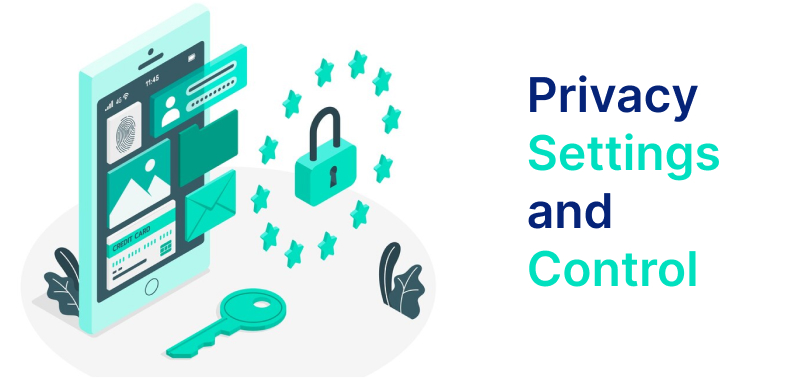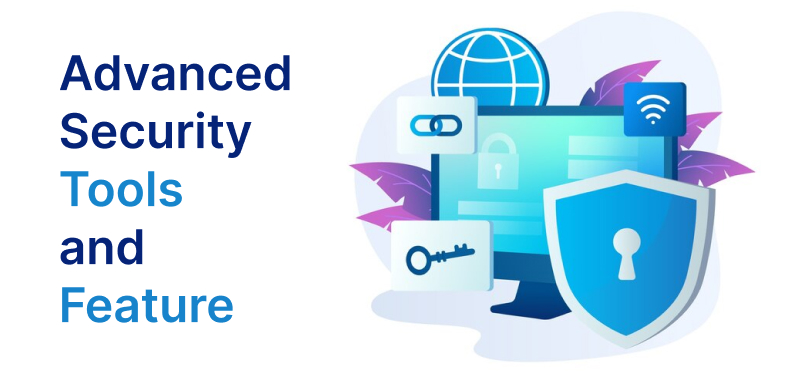Windows Security 101: Essential Guide for Users
Welcome to 'Windows Security 101: Essential Guide for Users', gathered by Easy2Patch experts. Your Windows OS security is a big deal! For Windows users, understanding cybersecurity basics is a must.

Looking back, security has come a long way in Windows. From the basic security of Windows 1 to the advanced features of Windows 11, each version got better at protecting your data. Windows 1 to Windows 9X (1983-1996) lacked security. Their reliance on the File Allocation Table (FAT) file system made them vulnerable to unauthorized access and modification. lacked security features, leaving it susceptible to unauthorized access, changes, and deletions of stored data.
Windows 2000 introduced the Data Protection Application Programming Interface (DPAPI), enabling asymmetric encryption of private keys.
Windows XP launched in 2001. Over time, it became apparent that Windows XP required numerous security patches and updates to address vulnerabilities and threats. Despite being touted for its security features, Windows XP ended up needing frequent patches to address security flaws that emerged after its release. Windows XP introduced several security enhancements, including AutoPlay for identifying removable media, improved DPAPI security using SHA1 hashing of the Master Key Password. Windows Vista, 7, and subsequent Windows versions have seen ongoing improvements in security, including hardware-based security measures and better file systems.
Windows 11, released in October 2021, has doubled the adoption rate of Windows 10, indicating its significance in the thriving PC market. It prioritizes security with features like Secured-core PCs, Trusted Platform Module chips, Windows Hello for Business, and encryption with Secure Boot. Moreover, Windows 11 addresses protection against emerging threats such as phishing, ransomware, malware, and IoT vulnerabilities.
Understanding Windows Security
Windows security is a multifaceted concept. It incorporates several layers of protection designed to shield your system from a wide array of threats. Below, we'll explore the various tiers of defense within Windows security:
1. Firewalls:
Firewalls are a barrier between your computer and potential intruders from the internet or network. They monitor and control incoming and outgoing network traffic based on predefined security rules. Windows Firewall provides a baseline level of protection by default, but advanced users may opt for third-party solutions, such as Easy2Patch Third-Party Patch Management solutions, for enhanced functionality.
2. Windows Defender
Windows Defender, Microsoft's built-in antivirus solution, offers real-time protection against threats, such as viruses, worms, and Trojans, before they can wreak havoc on your system. It regularly updates its virus definitions to stay ahead of emerging risks.
3. User Account Controls (UAC)
User Account Controls help prevent unauthorized changes to your system. They require user confirmation or administrator credentials for certain actions that potentially affect system settings or files. UAC minimizes the risk of unintentional or malicious modifications to critical system components.
4. Encryption
Encryption is the process of converting data into an unreadable format, known as ciphertext, to protect it from unauthorized access. Windows features built-in encryption capabilities, such as BitLocker, which encrypts entire disk volumes, and EFS (Encrypting File System), which encrypts individual files and folders. These encryption tools safeguard sensitive information from unauthorized viewing or tampering, both locally and during transmission over networks.
For the most recent Windows security updates, refer to the May 10, 2022 Security update (KB5013944). This update includes miscellaneous security improvements to internal OS functionality.
An Overview of Windows Security Architecture
The Windows security architecture serves as the framework for designing and implementing various security features within the operating system. It encompasses a range of elements. We will explore them further below:
Authentication
Authentication forms the cornerstone of Windows security architecture. It verifies the identity of users and entities attempting to access the system or its resources. Windows supports various authentication methods, including passwords, biometric authentication, smart cards, and multi-factor authentication (MFA). These mechanisms ensure that only authorized individuals can enter the system.
Access Controls
Access controls are essential for regulating user permissions and determining the level of access granted to different resources within the Windows environment. Windows employs discretionary access control lists (DACLs) and system access control lists (SACLs) to govern resource permissions at the file system and registry levels. Additionally, Windows implements role-based access control (RBAC) to assign privileges based on predefined roles. RBAC streamlines access management and enhances security.
Secure Boot
Secure boot in Windows is a fundamental security feature designed to protect the integrity of the boot process and prevent the execution of unauthorized or malicious code during system startup. It relies on cryptographic verification mechanisms to validate the authenticity and integrity of boot components, including firmware, bootloader, and operating system kernel.
Regular Updates
Regularly updating the Windows operating system is crucial for maintaining a powerful security posture. Software updates, including Windows security patches and fixes, are released periodically to address newly discovered vulnerabilities and mitigate potential security risks.
Promptly applying these updates strengthens users' systems against emerging threats. Additionally, updating third-party applications and security software further enhances the overall security posture of the Windows environment. Incorporating Easy2Patch into your patch management strategy streamlines the process of updating third-party applications effortlessly.
The Importance of Regular System Updates and Patches
Regular system updates and patches are a proactive measure against security threats, preserve privacy, enhance performance, ensure compatibility, and maintain overall system health. Here, we explore them in detail:
Security Enhancement
Regular updates are primarily issued to address known vulnerabilities within your system's software. Hackers are constantly probing for weaknesses to exploit. Neglecting updates leaves your system vulnerable to cyber threats and malware attacks.
Privacy Protection
Patches often contain fixes for privacy-related issues that could compromise sensitive data. With the increasing concerns over data privacy, keeping your system updated is crucial for safeguarding personal and confidential information. Applying patches promptly helps mitigate the risk of data leaks and maintains the integrity of your Windows privacy.
Performance Optimization:
Updates serve to enhance the overall performance of your system. They eliminate bugs, streamline processes, and optimize resource allocation, resulting in smoother operation and improved efficiency. Ignoring updates can lead to sluggish performance, system crashes, and diminished user experience.
Compatibility Assurance
Software applications and services are continually being updated and released. Regular system updates ensure that your operating system and installed software remain compatible with these advancements.
Overall System Health
Just as regular maintenance is essential for keeping a car running smoothly, regular updates are vital for maintaining the health and longevity of your system. They address underlying issues, improve stability, and keep the system infrastructure robust.
Easy2Patch, a third-party patch manager, automates the process of applying updates and patches, ensuring that your system remains secure, private, and optimized.
Windows Account Security
Our exploration in this section focuses on enhancing Windows security. We'll delve into crucial strategies for strengthening your system's defenses:

Setting Up Strong User Authentication
User Authentication is the process of verifying the identity of a user or entity accessing a system. Here are some best practices for user authentication in Windows:
- Multi-Factor Authentication (MFA)
Implement MFA whenever possible. It combines multiple authentication factors (such as passwords, smart cards, biometrics, or mobile apps) to enhance security.
- Password Policies
- Complex Passwords: Enforce strong password policies. Passwords should be complex (a mix of uppercase, lowercase, numbers, and special characters) and regularly updated.
- Password Length: Longer passwords are more secure. Aim for at least 12 characters.
- Password History: Prevent reusing recent passwords.
- Smart Cards and Certificates: Consider using smart cards or certificates for authentication. These provide an additional layer of security beyond traditional passwords.
- Biometric Authentication: If supported, use biometric methods (such as fingerprint or facial recognition) for user authentication.
- Least Privilege Principle: Assign minimal permissions to users based on their roles. Avoid granting excessive privileges.
- Kerberos Authentication: Leverage Kerberos for secure authentication within Active Directory environments.
The Role of User Account Control (UAC) and Best Practices
UAC is a crucial feature in Windows designed to prevent unauthorized changes to the operating system. Here's how it works:
- Prompt Elevation: When an action requires administrator-level permissions (such as installing software or modifying system settings), UAC prompts the user for approval.
- Standard User vs. Administrator: By default, users run with standard user privileges. When elevation is needed, UAC requests confirmation.
Best Practices for User Account Control
- Keep UAC Enabled: Do not disable UAC unless there's a convincing reason. It significantly enhances security.
- Avoid Running as Administrator: Regularly using an administrator account increases the risk. Use standard accounts for daily tasks.
- Configure UAC Settings: You can adjust UAC behavior via the Control Panel or Group Policy. Choose a level that balances security and usability.
- Monitor UAC Events: Monitor UAC events in event logs to detect suspicious activity.
- Application Compatibility: Some legacy applications may not work well with UAC. Test and ensure compatibility.
- Educate Users: Educate users about UAC prompts and encourage them to evaluate requests carefully.
Malware Protection in Windows
With its integrated Microsoft Defender Antivirus, Windows Security offers a suite of features and capabilities. These features are designed to detect, prevent, and remove malware effectively. Let's delve into the various aspects of malware protection provided by Windows Defender.
Windows Defender features and capabilities:
Windows Defender Features and Capabilities
Virus & Threat Protection
At the core of Windows Security is the Virus & Threat Protection feature. It serves as a centralized hub for managing your device's security posture. Here are some key functionalities it offers:
- Scanning for Threats: Windows Security provides multiple scanning options to cater to different user preferences and needs:
- Quick Scan: This option swiftly checks for recent threats without scanning every file and folder, offering a rapid assessment of your device's security status.
- Full Scan: A comprehensive scan that examines every file and program on your device.
- Custom Scan: Allows users to target specific files and folders for scanning, offering flexibility and customization in threat detection.
- Microsoft Defender Offline Scan: This unique feature enables scanning of your device after a restart, bypassing the Windows environment to detect and remove persistent malware effectively.
- Monitoring Threats: Users can effortlessly keep an eye on their device's security status by checking the current threats detected by Windows Security. Furthermore, they can review past scan activities, such as scan duration and the number of files scanned.
- Quarantine Management: Windows Security provides a quarantine feature to isolate and manage identified threats. Users can review quarantined threats and take appropriate actions, such as deleting or restoring files.
Virus & Threat Protection Settings
Windows Security offers users the ability to customize their level of protection according to their preferences and requirements. Some notable settings include:
- Customized Protection Levels: Users can tailor their Windows security settings to suit their specific needs, balancing between protection and performance.
- Sample Submission: The option to send sample files to Microsoft for analysis helps improve threat detection and enhance the overall security ecosystem.
- Exclusion Settings: Users can exclude trusted files and folders from repeated scanning, reducing unnecessary scanning overhead and potential false positives.
- Protection Toggle: For scenarios where temporarily turning off protection is necessary, Windows Security allows users to toggle protection on and off as needed, providing flexibility without compromising security.
Best Practices for Scanning and Real-Time Protection
Here are some best practices to ensure comprehensive security:
Always-On Scanning (Real-Time Protection)
Windows Defender sets the standard with its perpetual vigilance approach. Leveraging advanced technologies such as file and process behavior monitoring, heuristic analysis, and machine learning, it automatically detects and neutralizes threats in real time. This proactive approach blocks malicious activities before they cause harm.
Regular Scans
While real-time protection offers continuous defense, supplementing it with regular scans is crucial. Windows Security facilitates automated scans, but users should also conduct periodic manual scans. Quick scans provide a swift overview, ideal for routine checks. Full scans delve deeper, reserved for thorough examinations when specific threats are suspected. Custom scans enable users to target specific files and folders.
Microsoft Defender Offline Scan
In scenarios where malware exposure is suspected or when internet connectivity is unavailable, the Microsoft Defender Offline Scan becomes indispensable. This feature performs a comprehensive scan post-restart.
Firewalls and Network Security in Windows
The Importance of Windows Firewall
The importance of Windows Firewall lies in its ability to reduce the risk of cyber threats, protect sensitive data, and provide a layer of defense alongside other security measures. At its core, Windows Firewall serves as a formidable barrier between your system and the external network. It scrutinizes incoming and outgoing network traffic, permitting only authorized communication to traverse its digital gates.
Firewall defends against malware and threats. This keeps threats out and stops viruses from sneaking in. One of the hallmarks of Windows Firewall is its ability to segment network zones, tailoring security measures to suit different contexts. The firewall enables you to set specific rules for various scenarios. It works regardless of your connection type, ensuring security across different networks (Wi-Fi, private home networks, or corporate domains).
With Windows Firewall, granular control over network access is at your fingertips. Through configuration of rules, you can dictate which applications are permitted or restricted to communicate over the network. Central to the efficacy of Windows Firewall is its adherence to a default deny policy. Under this paradigm, all incoming network traffic is blocked unless expressly authorized by predefined rules.
Proactive monitoring and timely detection of potential threats are imperative. Windows Firewall facilitates this through comprehensive logging and monitoring capabilities.
Windows Firewall Configuration
Here’s how to configure it:
Access Windows Security: Navigate to Settings > Update & Security > Windows Security > Firewall & Network Protection. Or, search for “Windows Security” in the Start menu or click on the shield icon in the taskbar.
Turning on the Firewall: Click on Firewall & Network Protection.
Ensure the firewall is active for domain, private, and public networks.
For each network type, you can:
- Turn Microsoft Defender Firewall on or off.
- Access advanced options specific to that network type.
Setting Rules: Define rules to allow or block specific applications, ports, and services from accessing the network.
Important Considerations
- Leave the firewall enabled unless there’s a compelling reason to turn it off (e.g., for troubleshooting purposes).
- Customize rules based on your specific needs (e.g., allowing specific apps through the firewall).
- Consider enabling the option to block all incoming connections for added security (though this may affect certain apps).
Secure Network Practices, Including Public and Private Network Settings
In addition to configuring Windows Firewall, adopting secure network practices is vital for protecting your system, whether in public or private settings.
- Regular Audits: Conduct periodic audits to pinpoint and remedy vulnerabilities lurking within your network infrastructure.
- Policy Updates: Keep security policies current and disseminate them effectively throughout your organization to ensure everyone remains abreast of the latest security protocols.
- Data Encryption: Encrypting sensitive data shields it from prying eyes during transmission, mitigating the risk of interception.
- Antimalware Updates: Stay vigilant by regularly updating your antimalware software to fortify your defenses against evolving threats.
- Access Controls: Implement robust access controls and employ multifactor authentication to bolster your network’s defenses against unauthorized access attempts.
Windows Privacy Settings and Control
Privacy settings and controls in Windows are crucial tools for users to manage the flow of their personal information and protect their privacy while using the operating system. Privacy settings in Windows provide users with the ability to manage the information shared with Microsoft and applications installed on the system. These settings govern access to features that contain personal data, such as advertising ID, browsing history, voice patterns, and more. App permissions, a subset of privacy controls, allow users to specify which hardware components or system features individual applications can access. It includes permissions for accessing location services, cameras, microphones, contacts, calendars, and more.

Managing Privacy Settings in Windows
To adjust your privacy settings in Windows, follow these steps:
- Click on the Start button.
- Open Settings.
- Select Privacy & security.
- You’ll find a list of general privacy options here.
- On the left side of the page, you’ll see links to specific privacy settings.
For more detailed information, explore the Data collection summary for Windows.
Understanding and Configuring App Permissions
Accessing an App’s Permissions:
The easiest way to access an app’s permissions is from the Start Menu:
- Locate the app in the Pinned section or the All Apps list.
- Right-click or press and hold its shortcut.
- Click or tap App settings in the contextual menu.
- Alternatively, you can find the app in the All Apps list, select More, and then choose App settings.
Setting App Permissions:
- Once in the app’s settings, you’ll see its App permissions.
- Here, you can enable or disable permissions for various features like Location, Camera, Microphone, and more.
- Adjust these permissions based on your preferences and the app’s requirements.
For a visual guide, there are tutorials available that walk you through adjusting privacy settings and app permissions in Windows:
- Windows 10 Settings - Privacy Controls
- Windows 11 Configuration: Privacy, Desktop Settings & Registry Hacks
- Windows 11 Privacy Settings You Should Change!
Data Protection and Backup in Windows
BitLocker is a cornerstone of Windows' security features. It is a built-in feature in Windows and offers powerful disk encryption capabilities. BitLocker encrypts entire volumes, providing a formidable defense against data theft or exposure. This defense is crucial for lost, stolen, or improperly decommissioned computers. BitLocker is available on the following Windows editions:
- Windows 11:
Available on Pro, Enterprise, and Education editions.
- Windows 10:
Available on Pro, Enterprise, and Education editions.
- Windows Server 2022:
BitLocker is supported on Windows Server 2022.
- Windows Server 2019:
BitLocker is supported on Windows Server 2019.
- Windows Server 2016:
BitLocker is supported on Windows Server 2016.
Here’s how you can use it:
- Sign in with a Microsoft Account:
- Ensure you're logged in to your Windows PC with an administrator account linked to your Microsoft account.
- If using a local account, switch to a Microsoft account via Start > Settings > Accounts > Your info, and choose Sign in with a Microsoft account instead.
- Back Up Your Folders:
- Windows Backup seamlessly syncs designated user folders (e.g., Desktop, Documents, Pictures, Videos, and Music) to your OneDrive account.
- To configure this, access Windows Backup, select the desired folders for backup, and sync them to OneDrive.
- Back Up Your Settings:
- Windows Backup extends its functionality to backing up various settings, including installed applications, Wi-Fi network details, language preferences, and more.
- Customize these settings according to your preferences.
- Turn On BitLocker:
- If your device supports BitLocker, access it by searching for Manage BitLocker in the taskbar or navigating to Settings > Privacy & security > Device encryption > BitLocker drive encryption.
- Select Turn on BitLocker and proceed with the setup instructions.
Note: BitLocker is unavailable in Windows 10 Home edition.
Backup Options in Windows
Windows offers diverse built-in backup options to ensure comprehensive data protection:
- File History: Automatically backs up your files to an external drive or network location.
- Windows Backup: Creates system images and backs up files to an external drive.
- OneDrive: Syncs your files to the cloud, providing an additional layer of protection.
- Third-Party Backup Software: Utilize third-party tools for advanced backup features.
Importance of Regular Data Backup in Windows
Regular data backups serve multiple purposes, including data loss prevention, business continuity, and peace of mind. They prevent critical file loss resulting from hardware failure, accidental deletion, or malware, thereby ensuring the continuity of operations. They enable swift recovery from data loss incidents which is crucial for sustaining business functions. Additionally, regular backups offer peace of mind, both personally and professionally, knowing that data is securely backed up and protected against unforeseen circumstances.
Advanced Windows Security Tools and Features
The Windows Security Center is available on Windows 10 and Windows 11. It serves as a centralized hub and offers users a comprehensive overview of their device's security posture. It includes an array of protective measures, such as defense against viruses and threats, fortified account protection, vigilant firewall and network defenses, meticulous app and browser control, and robust device security protocols. Rooted in the principles of Zero Trust security, the Security Center ensures that access to resources remains contingent upon the unequivocal verification of safety and integrity.

Windows Security Center Advanced Features
Controlled Folder Access
This feature protects your data from ransomware and other threats by allowing only trusted apps to access designated folders. You can activate Controlled Folder Access easily via the Windows Security App or other methods, keeping sensitive information safe from unauthorized access.
Windows Sandbox
Windows Sandbox provides a secure environment for running applications isolated from your system. It's available in Windows 10 Pro and Enterprise editions, ensuring a clean slate with each use and protecting your system using hardware-based virtualization.
Microsoft Defender Antivirus: Offers real-time protection against malware and threats.
Microsoft Defender SmartScreen: Alerts you to potentially harmful apps, files, and downloads.
Windows Firewall: Blocks unauthorized access to your PC from the internet or network.
Bluetooth & Wi-Fi Security: Strengthens connections with encryption methods, even on public networks.
Virtual Private Networks (VPN): Secures communication between your device and the internet.
Windows Hello: Provides secure device authentication with PIN, facial recognition, or fingerprint.
Passkey: Safely stores digital credentials for quick and secure access to online accounts.
Find My Device: Helps recover lost or stolen hardware.
Frequently Asked Questions
To update Windows and ensure you have the latest security features:
- Go to Settings > Update & Security > Windows Update.
- Click on Check for updates to download and install the latest updates.
The best way to create and manage strong passwords in Windows is to:
- Use a password manager integrated into Windows or a third-party application.
- Create passwords with a mix of letters, numbers, and symbols.
To enable two-factor authentication for your Microsoft account:
- Visit the Microsoft account security page and sign in.
- Follow the prompts to set up two-factor authentication using your phone or an authenticator app.
To activate and configure Windows Defender:
- Open Windows Security from the Start menu.
- Click on Virus & Threat Protection and ensure real-time protection is on.
To set up and manage Windows Firewall settings:
- Access Windows Security > Firewall & network protection.
- Review and adjust your firewall settings as necessary.
BitLocker is a feature in Windows that allows you to encrypt your hard drive. To use it:
- Search for BitLocker in the Start menu and open the BitLocker Drive Encryption control panel.
- Follow the instructions to encrypt your hard drive.
To perform regular backups of your data in Windows 10:
- Open the Control Panel:
- Click on the Start button.
- Access the Backup and Restore Settings:
- Within the Control Panel, click on “Backup and Restore” under the “System and Security” section.
Set Up Backup:
- Click the “Set up backup” option.
- Choose an external drive where you want to store your backups.
- Select Backup Options:
- Opt for “Let me choose” to customize your backup.
- Under “Data Files,” select the files and folders you want to back up.
- Ensure that “Local Disk (C:)” (your primary drive) is checked.
Also, check “Include a system of drives: System Reserved, (C:)”.
Schedule Backups:
- Click “Change schedule” to set up automatic backups.
- Enable “Run backup on a schedule” and specify the frequency, date, and time for backups.
To perform regular backups of your data in Windows 11:
- Open Control Panel:
- Type “Control panel” in the Windows search bar and open the application.
- Access System Restore:
- In the Control Panel, type “Recovery” into the search bar.
- Select “Recovery” from the results.
- Configure System Restore:
- Choose “Configure System Restore.”
- Navigate to the System Protection tab.
Recognizing and protecting yourself from phishing attacks on your Windows system is crucial. It's important to be aware of the deceptive tactics used by cybercriminals. These tactics are aimed at tricking users into revealing sensitive information.
Windows systems offer several features to recognize and protect users from phishing attacks:
Microsoft Defender SmartScreen: Integrated into Windows 11, version 22H2, this feature provides Enhanced Phishing Protection. It safeguards Microsoft school or work passwords against phishing attempts and unsafe usage of websites and applications.
Phishing Protection in Windows Security: Users can activate phishing protection by accessing the Windows Security app, navigating to "App & browser control," and toggling on the Phishing protection feature.
Alerts for Unsafe Password Usage: Enhanced Phishing Protection alerts users if they input their work or school password on a malicious website, prompting them to consider changing their password for security purposes.
Password Reuse Warnings: This feature notifies users if they reuse their work or school Microsoft account password across different websites and applications, advising them to change it to enhance security.
Protection from Unsafe Storage: Users are warned if they store their work or school password in plaintext within text editors such as Notepad or Word. Recommendations are provided to delete the password from such files to prevent potential security breaches.
IT Automation Key Benefits and Best Practices

What Is Vulnerability Management?

Ultimate IT Risk Management Guide 2024: Best Practices, Strategies, and Tools

Best Practices for IT Infrastructure Management in 2024

What is Windows Patch Management? Features, Challenges, and Best Practices in 2024

What are the Cybersecurity Risks Associated with Outdated Software and Operating Systems?






